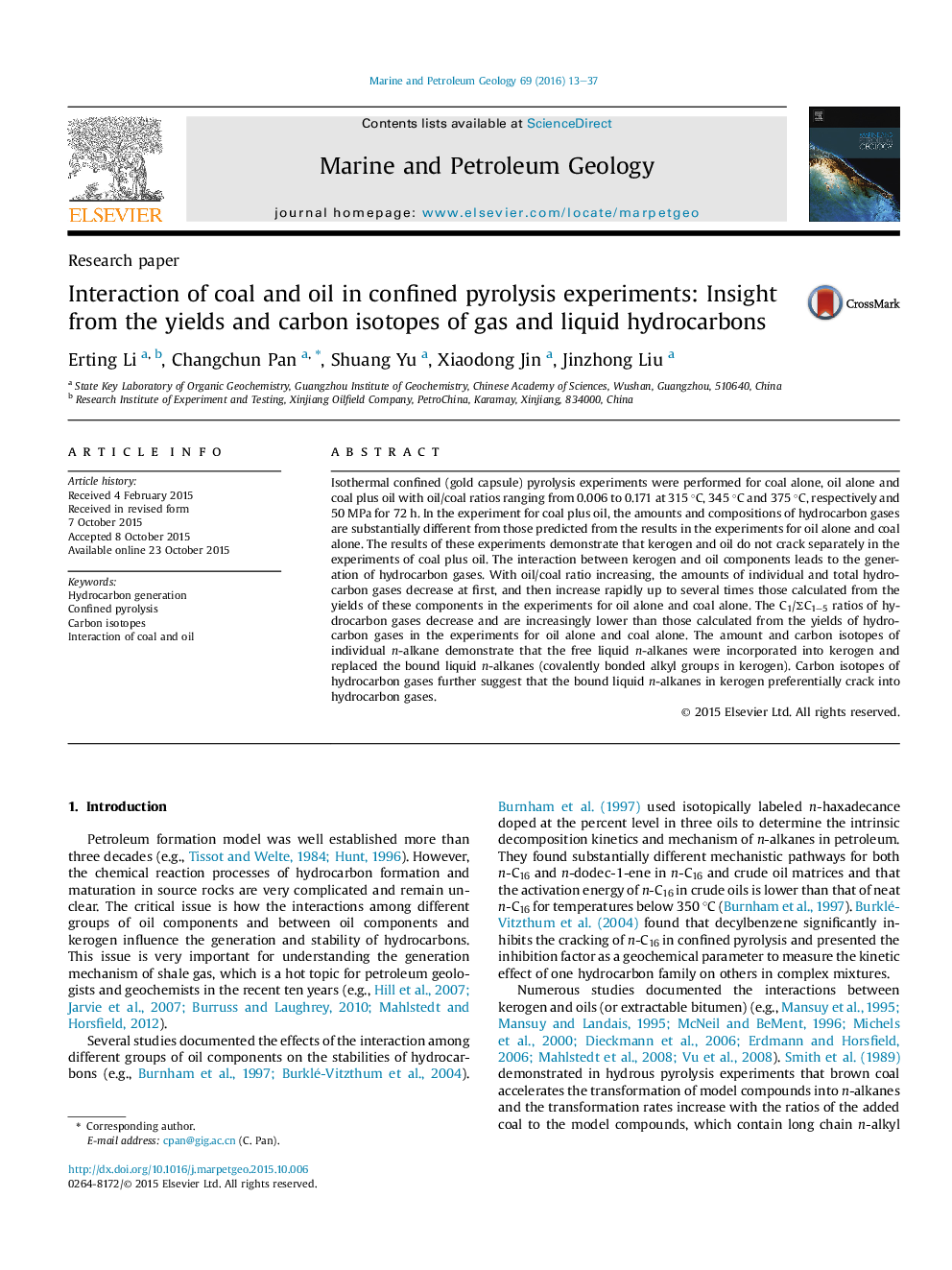| کد مقاله | کد نشریه | سال انتشار | مقاله انگلیسی | نسخه تمام متن |
|---|---|---|---|---|
| 4695464 | 1637158 | 2016 | 25 صفحه PDF | دانلود رایگان |
• Confined pyrolysis experiments on oil and coal were performed.
• Oil and kerogen do not crack separately.
• Interaction of oil and kerogen leads to hydrocarbon gas formation.
• Free alkanes incorporate into kerogen and replace the bound alkanes.
• The bound alkanes preferentially crack into hydrocarbon gases.
Isothermal confined (gold capsule) pyrolysis experiments were performed for coal alone, oil alone and coal plus oil with oil/coal ratios ranging from 0.006 to 0.171 at 315 °C, 345 °C and 375 °C, respectively and 50 MPa for 72 h. In the experiment for coal plus oil, the amounts and compositions of hydrocarbon gases are substantially different from those predicted from the results in the experiments for oil alone and coal alone. The results of these experiments demonstrate that kerogen and oil do not crack separately in the experiments of coal plus oil. The interaction between kerogen and oil components leads to the generation of hydrocarbon gases. With oil/coal ratio increasing, the amounts of individual and total hydrocarbon gases decrease at first, and then increase rapidly up to several times those calculated from the yields of these components in the experiments for oil alone and coal alone. The C1/ΣC1–5 ratios of hydrocarbon gases decrease and are increasingly lower than those calculated from the yields of hydrocarbon gases in the experiments for oil alone and coal alone. The amount and carbon isotopes of individual n-alkane demonstrate that the free liquid n-alkanes were incorporated into kerogen and replaced the bound liquid n-alkanes (covalently bonded alkyl groups in kerogen). Carbon isotopes of hydrocarbon gases further suggest that the bound liquid n-alkanes in kerogen preferentially crack into hydrocarbon gases.
Journal: Marine and Petroleum Geology - Volume 69, January 2016, Pages 13–37
